National Collections
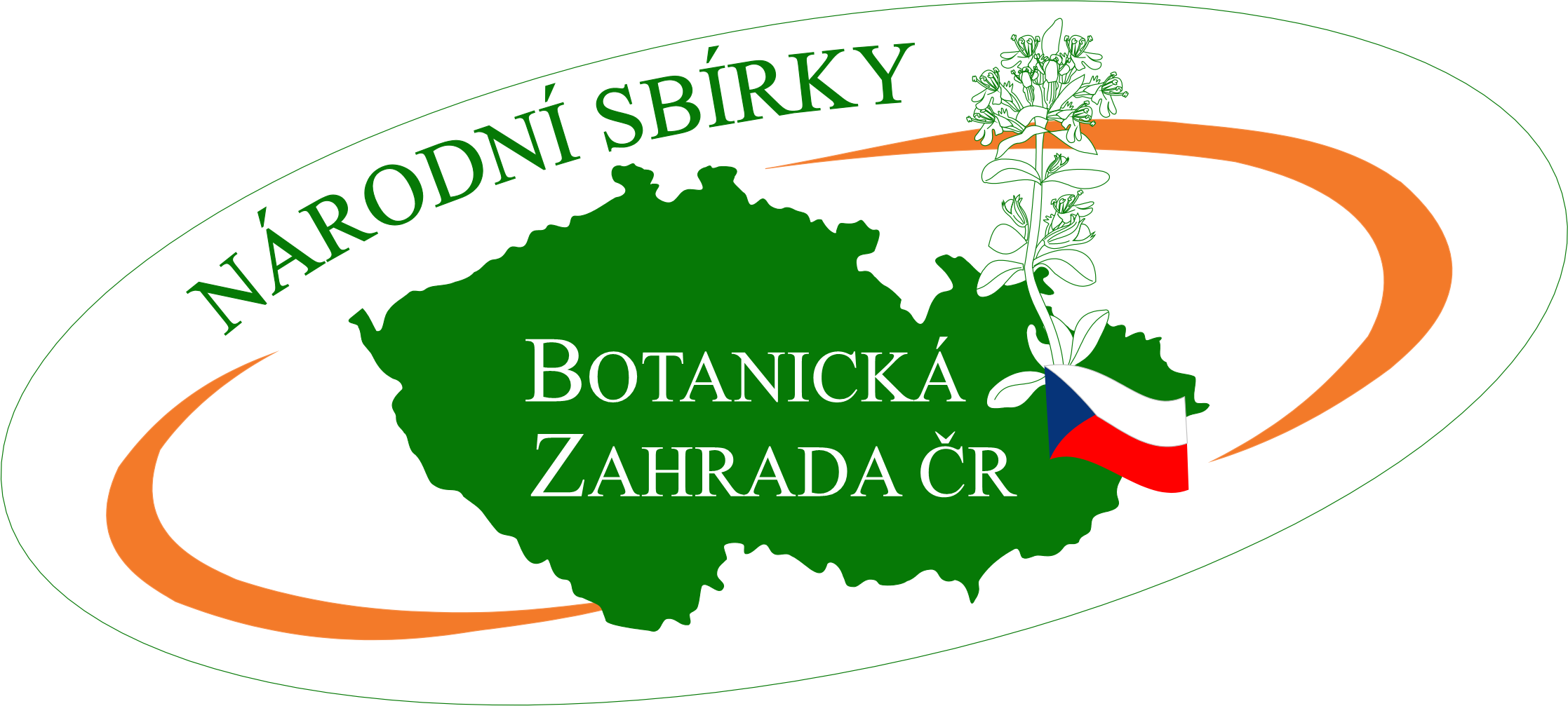 The most valuable and significant plant collections in the Czech Republic, which meet required quality standards, are awarded the title "National Collection" by experts from the Union of Botanical Gardens of the Czech Republic. In our garden, you will find four such collections:
The most valuable and significant plant collections in the Czech Republic, which meet required quality standards, are awarded the title "National Collection" by experts from the Union of Botanical Gardens of the Czech Republic. In our garden, you will find four such collections:
- Cacti
- South African succulents and geophytes
- Frost-hardy plants of southern Africa
- Flora of the Czech Karst
Cacti
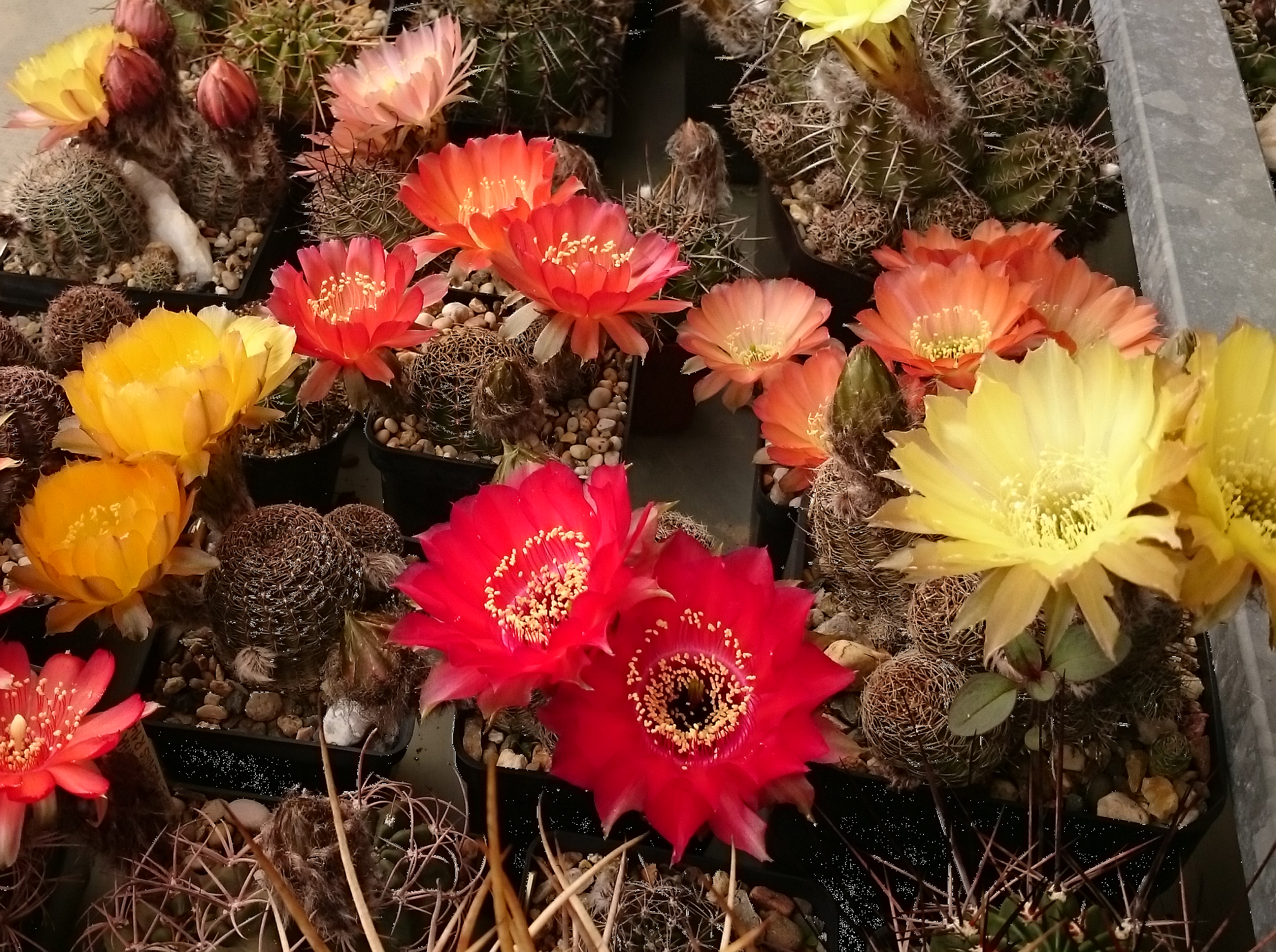
The cactus collection focuses primarily on spherical cacti from the mountains of South America. Nearly complete collections include Andean genera such as Lobivia, Mediolobivia, Acanthocalycium, Rebutia, and Sulcorebutia. Other noteworthy genera from lower elevations, such as Echinopsis and Notocactus, are also represented. In recent years, rarer tropical genera like Melocactus, Discocactus, and others, especially from Brazil and the Caribbean, have been added. Additionally, there are epiphytic species, primitive leafy cacti, and frost-hardy species from both North and South America. As of June 2023, our database includes approximately 4,500 different cactus species.
The geographically organized exposition is open to the public as part of the greenhouse admission. Storage greenhouses, which contain complete systematic collections, are mainly accessible to colleagues from other botanical gardens and researchers, by prior arrangement.
It is difficult to determine the exact date of the collection's establishment. There are mentions of cacti in the garden as early as around 1844, though only in small numbers. A turning point likely occurred during the tenure of curator Rudolf Šubík, who took over the cactus collection in 1947 and began to expand it. Records show that at an exhibition in 1959, the garden presented an unprecedented number of cacti, mostly imports. Therefore, we consider the collection's inception to be around 1950.
South African succulents and geophytes
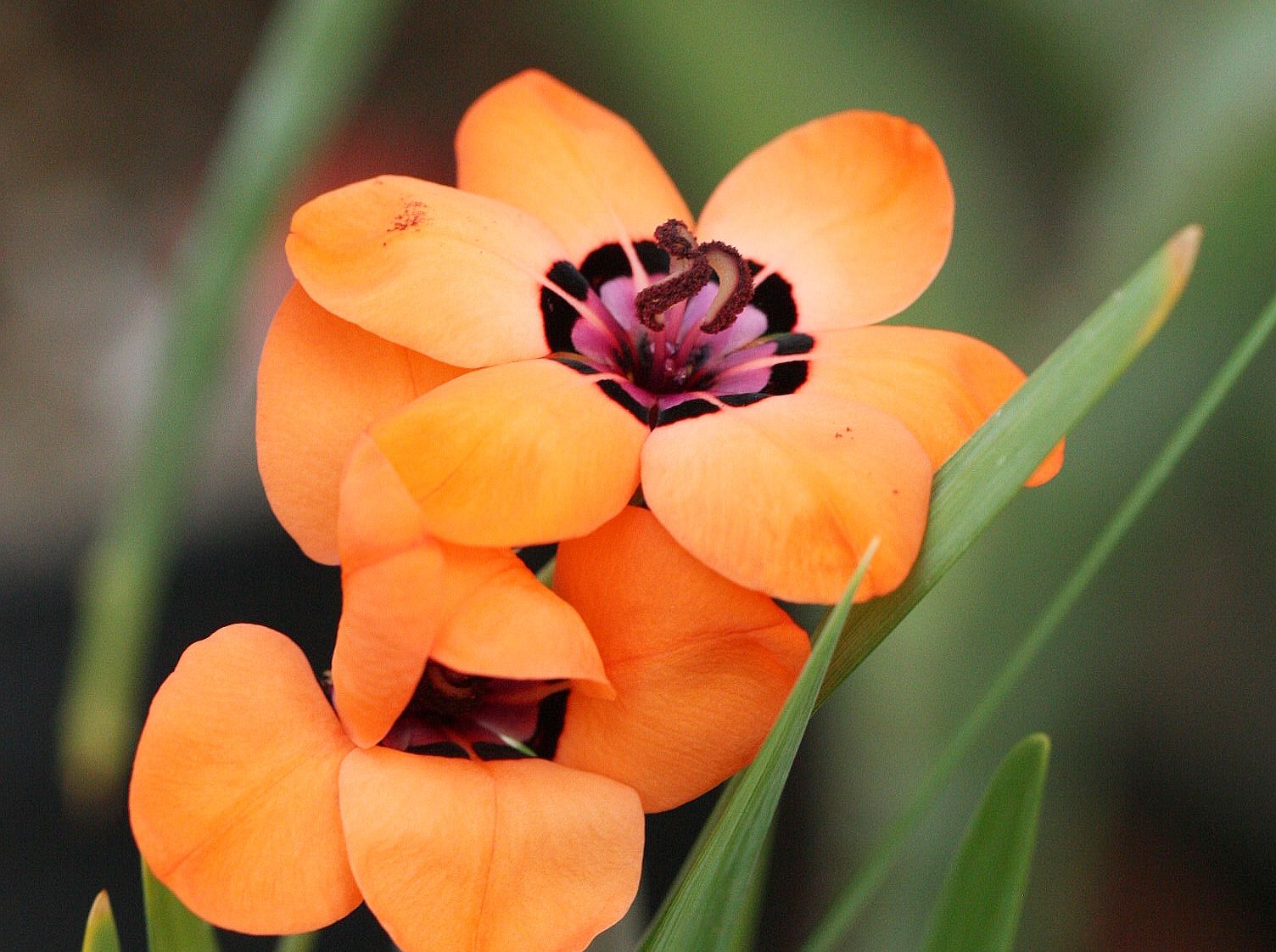
The most significant part of the geophyte collection is the research collection of South African representatives of the Oxalis genus (wood sorrels). The collection is likely the largest of its kind in the world, with around 350 species. Other important groups of South African geophytes with winter growth, primarily from the families Iridaceae, Asparagaceae, and Amaryllidaceae (about 550 species), are also well represented.
Among South African succulents, the richest families are Aizoaceae, Crassulaceae, and Asphodelaceae (about 1,400 species in total), with most of the plants in the collection having documented wild origins.
Part of the collection, especially succulents, is planted in the publicly accessible section of the greenhouse (themed displays of Little Karoo, Namaqualand, Namibia, and the southeast of South Africa). Another portion of the collection, mainly bulbous plants and geophytic Oxalis species, is kept in the collecion greenhouse. When in bloom, plants from this collecion are displayed in two glass showcases in the public section. Colleagues from botanical gardens and researchers can arrange a visit to the collection by prior arrangement.
As early as 1884, our Index Plantarum contained many South African succulents, including 102 species of ice plants (Aizoaceae) and 67 species of Aloe. It is unknown who was responsible for the collection at that time. The Index Plantarum was published by Prof. Kosteletzky. The curator Jaroslav Ullmann (1990–2008) further focused on South African succulent species in the garden. The collection, approaching its current form, was established in 2013 by Tomáš Procházka, who at that time acquired a large part of the Oxalis species from Prof. RNDr. Jan Suda, Ph.D., and began to further develop the collection.
Frost-hardy plants of southern Africa
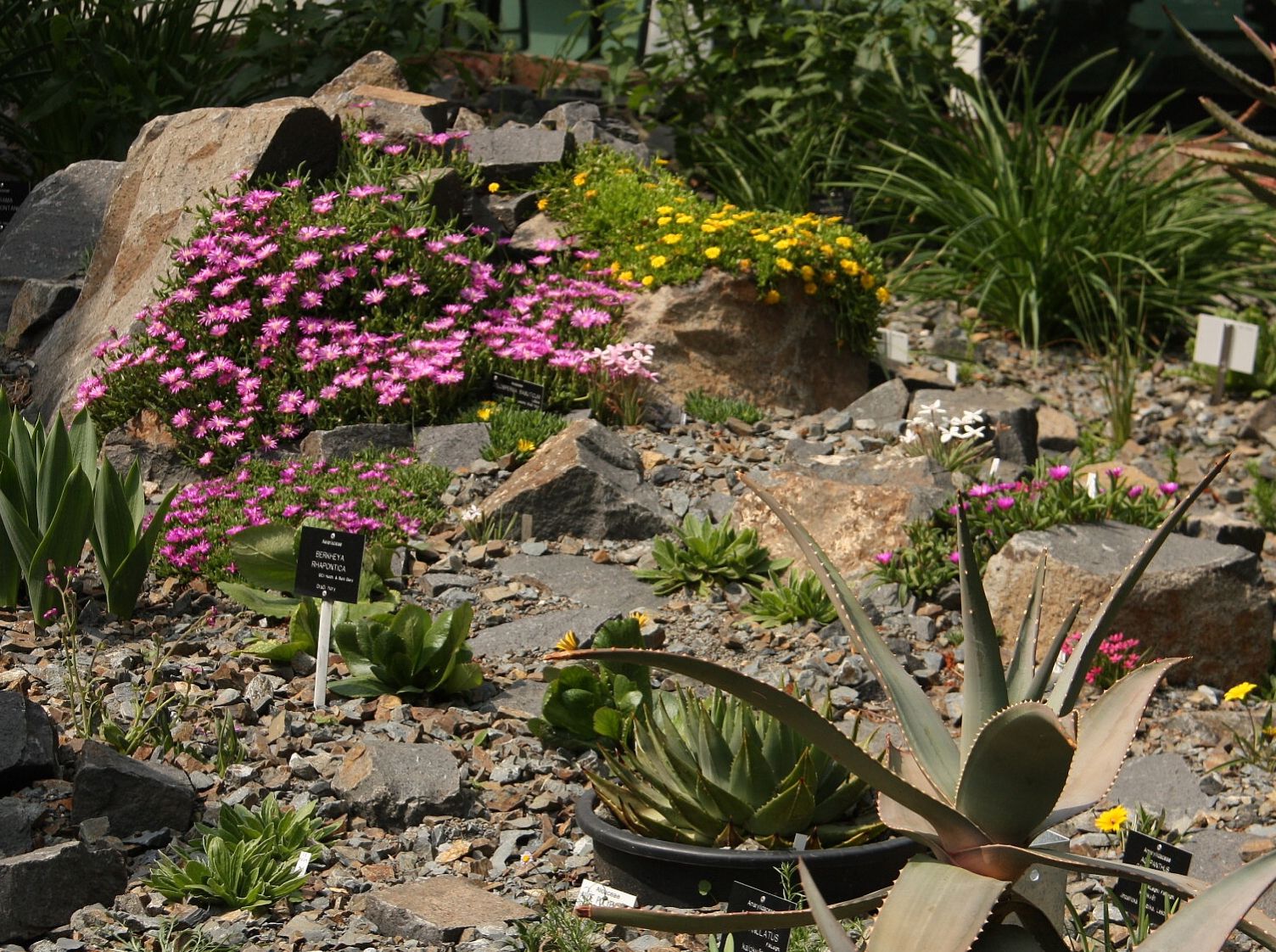
The collection is focused on plants from the mountainous regions of southern Africa, which have the potential to survive year-round outdoor cultivation in the conditions of Prague. Prague has a very specific climate, with a warmer microclimate than most of the Czech Republic. The collection is comprehensive, including all types of plants that have a chance to survive in this region. The most represented are succulents (Delosperma, Crassula), grasses, geophytes (especially from the Iris family), botanical species of Kniphofia, and representatives of the Asteraceae family (Helichrysum, Senecio, Berkheya). Many species are still being tested here and are likely not to be seen in permanent outdoor culture anywhere else in the Czech Republic (e.g., Erythrina zeyheri, Kniphofia multiflora). As of June 2023, the collection contained about 100 taxa.
The plants are displayed in the publicly accessible outdoor area of the garden. They can be found in the front section, immediately to the right of the main path.
The collection was established in 2017 by curator Tomáš Procházka. By 2023, the collection included 135 plant species, with plans for ongoing expansion.
Flora of the Czech Karst
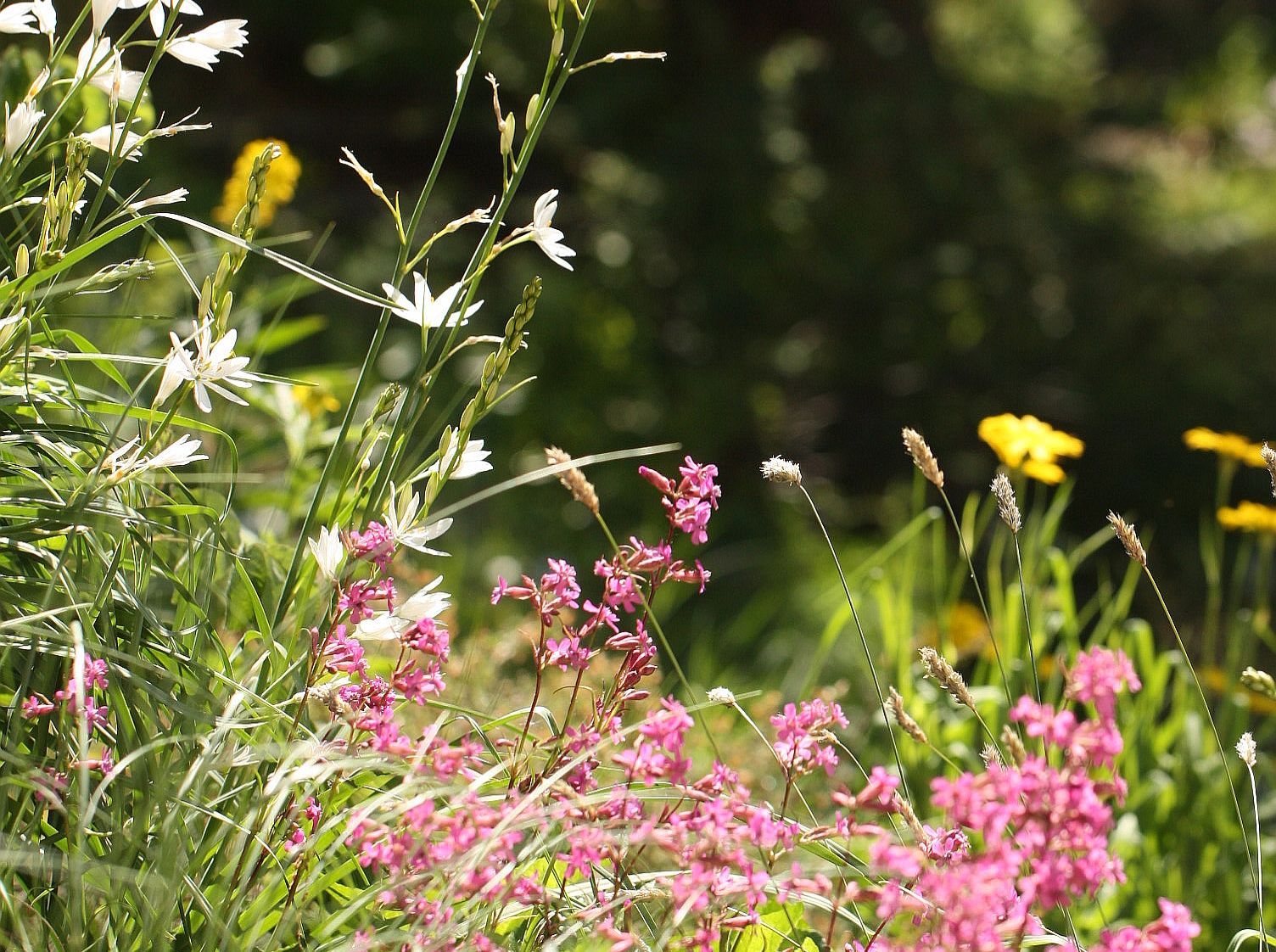
The collection focuses on species from the botanically rich area of the Czech Karst. The collection includes many critically endangered species (C1 category of the red list), headed by the Austrian dragonhead (Dracocephalum austriacum), which is part of an ex-situ conservation program for endangered species.
The plants are planted in the open on a rock garden within the large Central European Flora exhibition, which is freely accessible to the public year-round.
Plants from the Czech Karst have been cultivated on the "Karlštejn" limestone rock garden since the founding of the exposition in 1904. However, plants of different origin were also present. Since 2022, a gradual restoration of this part of the exhibition has been underway, and the collection will henceforth focus exclusively on plants from this area.
